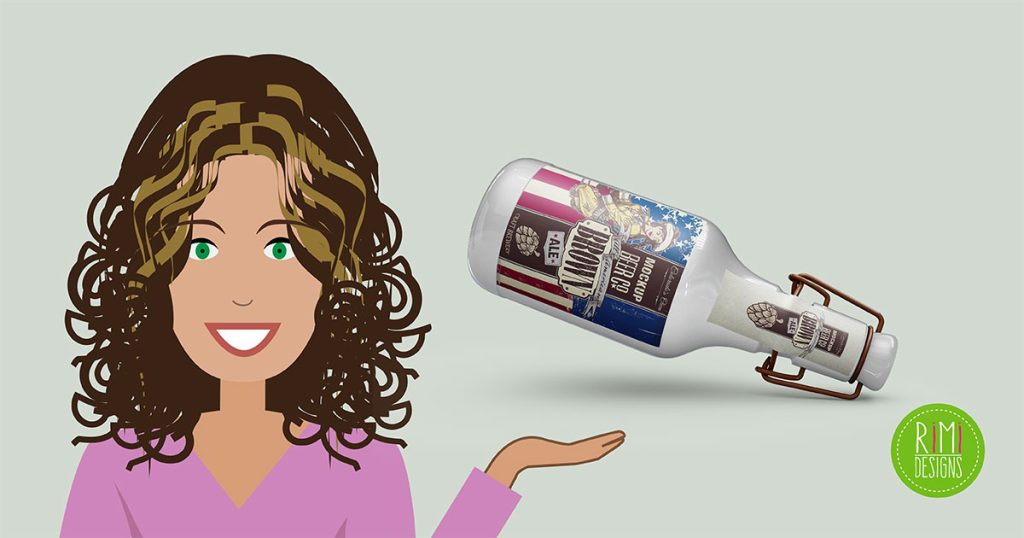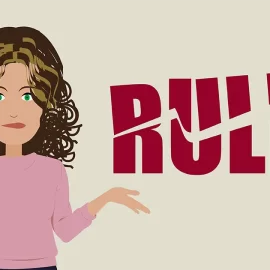
Improve Your Label Design in 5 Easy Steps
Label design can be overwhelming given the amount of moving parts. Unlike logo design, where the focus is generally on a single element, label design is the process of creating a composition of five, ten or even fifteen design elements.
To further the intricacy, some of these design elements are often provided by a client, while others need to be self-created. In taming this design task, visual comfort can be hard to come by.
This guide will help you decrease the amount of clicks to reach comfort and also inspire the workflow that gets you there.
1. Block it out
A good label is a sum of parts working together. All parts are perceived in context of, and in relation to one another. For this reason, it is important to place all label elements on the art board together before beginning any sizing, placement, styling or typographic work. Once all of the label elements are on the art board, the blocking process can begin.
In this article, the word “blocking” loosely defines the process of shuffling, crudely sizing and tentatively arranging the label elements. It’s a process of exploring the ways in which the design can come together.
2. Breathe
One thing to keep in mind through the blocking process is that label layout is not Tetris. A designer does not get a better score for uniformly packing in all the design elements and using all of the available space.
A comfortable label often results from a balance between empty and occupied space.
3. Sizing
Since label designers don’t often oversee print production or even see the final product, chances are they will size elements relative to one another without reference to physical proportion. In other words, if a label design looks good on a computer screen most designers are happy.
Unfortunately, this is a big mistake. In print media, the physical size of a design element is equally as important as its relative size – especially for typography!
Just because it’s comfortable on the computer screen does not mean it will be comfortable on paper. In fact, the physical size of a font often needs to be adjusted after seeing it printed on paper.
So what does this mean? Print on paper! Any self-respecting label designer should be continuously printing test labels from their home printer and checking for legibility, spacing and ultimately for the physical perception of size.
Those without printer access need not worry either. There is one trick of trade that can help designers grasp an understanding of the physical size of print media elements without a printer.
The first step is to open the design program of choice and to create a rectangle that is exactly 10cm wide. Then, with a ruler or measuring tape placed against the computer screen, measure the rectangle. Without removing the ruler, continuously adjust the program zoom level until the rectangle measures exactly 10cm on the physical ruler. Write down the zoom level.
Take a moment to revel at the calibration that has been completed and how greatly it will inform one’s brilliant designs to come! This zoom level essentially matches the size of the design work on your screen to the exact size it will physically print. Keep in mind that this zoom level will be different for different design programs.
Naturally, a designer will need to be zooming in and out to fine tune a design. That is ok, so long as the calibration zoom size is constantly referred to and an understanding of the physical proportion is maintained.
4. Hierarchy of perception
When a consumer picks up a product off a shelf, there is an order in which they visually receive design elements. This order certainly plays into how comfortable a label feels and is largely controlled by the designer through various parameters, such as size, colour and contrast.
A wise designer will manipulate the hierarchy of perception to deliver design elements in a logical order. For example: attention grabber > brand name > product name > product info. This is a comfortable hierarchy that guides the observer without confusion.
Of course, it is not always that simple. Sometimes the brand name is the attention grabber, so on and so forth. That is where designer instinct comes in.
Regardless, hierarchy of perception should be kept in mind with regard to comfortable label layout.
5. Ask for copy edits
Often times, a client simply provides more copy than there is space for. Asking a client for copy edits is perfectly acceptable. More often than not, they will understand, given you provide a well articulated rationale.
Think about a newspaper work room, where the editors and layout staff are in a continuous back and forth to get the columns to fill a page. The space constraints in a label design are no different. Sometimes a sentence or two needs to be omitted for a comfortable layout to be possible.
Final thoughts
The concepts outlined above are simply guidelines. There is no perfect formula for comfort. Label layout is a process of give and take and of push and pull that is largely informed by a designer’s inspiration.
These guidelines are simply meant to lead a wild and creative imagination to a destination that works both creatively and logically.
SOURCE: 99 Designs



